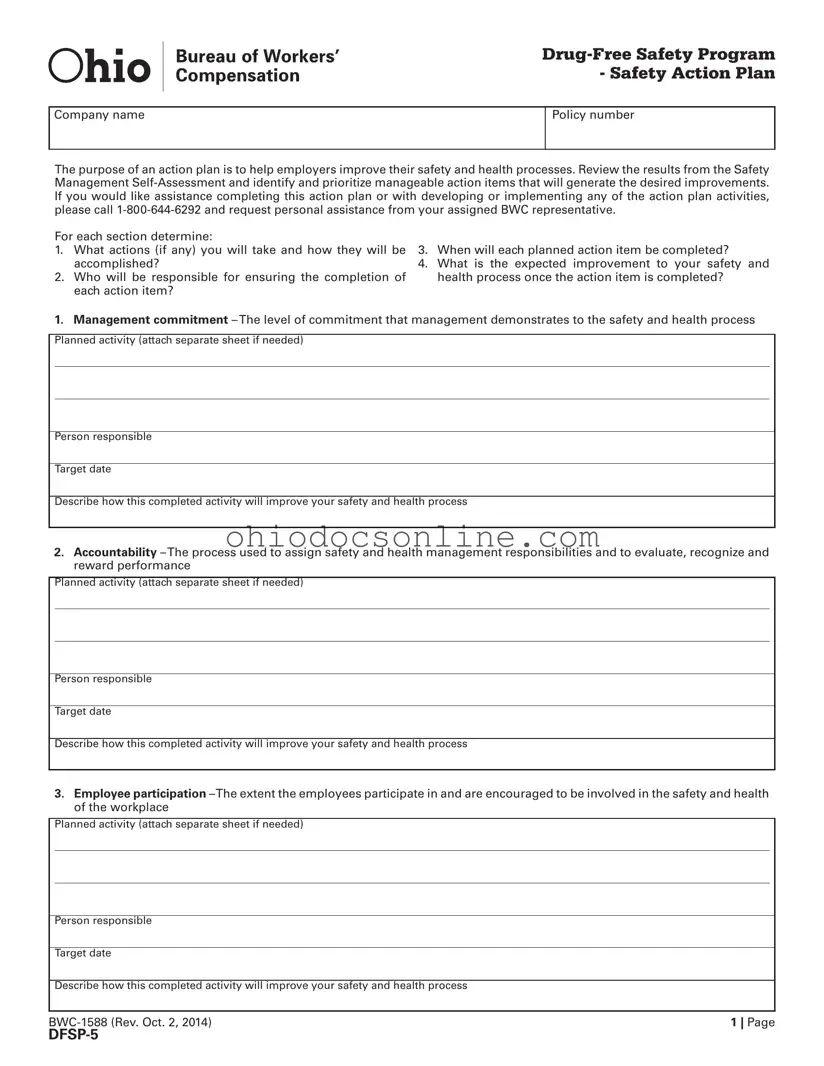Ohio Dfsp 5 Template in PDF
The Ohio Dfsp 5 form is a crucial document designed for employers participating in the Drug-Free Safety Program, aimed at enhancing workplace safety and health. This form serves as a comprehensive action plan, guiding organizations in identifying, prioritizing, and implementing strategies to improve their safety processes. By utilizing the insights gained from the Safety Management Self-Assessment, employers can create a structured approach to foster a safer work environment.
Open Editor
